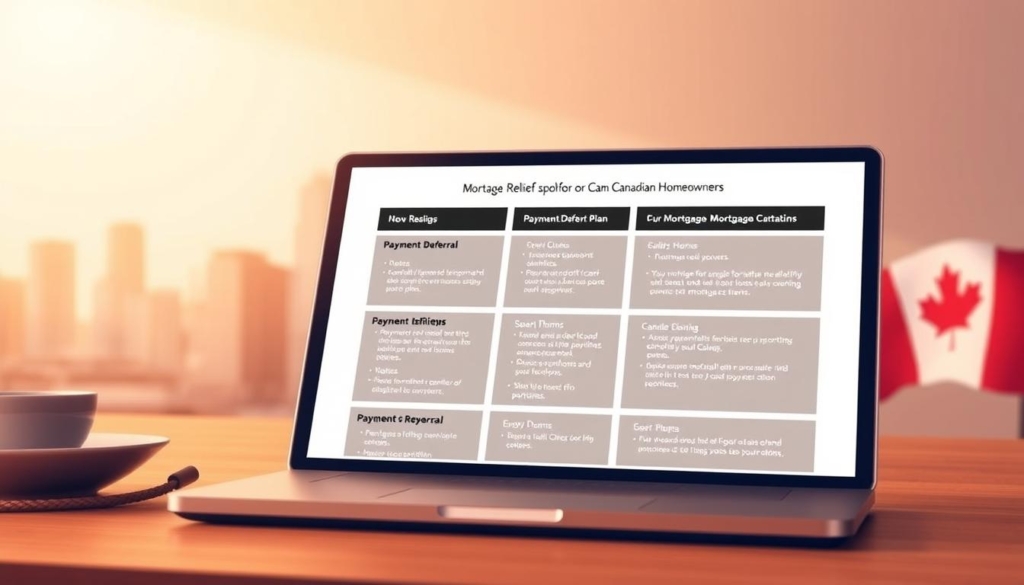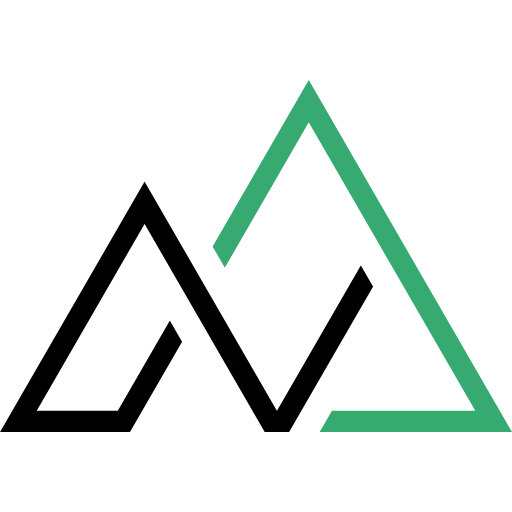Understanding the Canadian real estate market means knowing about the mortgage note. It’s a key document that outlines your home loan terms. This guide will explain what a mortgage note is and why it’s important for owning property in Canada.
New Homes Alberta helps homebuyers understand mortgage documents. Our team knows a lot about mortgage notes. We offer advice to help you make smart choices when buying a home.
The mortgage note is a basic document that lists important financial details. It includes the loan amount, interest rates, and how you’ll pay it back. It also talks about what happens if you can’t pay. Knowing this document helps Canadian homebuyers make good choices in real estate.
Key Takeaways
- A mortgage note is a legally binding financial document in Canadian real estate
- The document specifies loan terms, interest rates, and repayment conditions
- Understanding your mortgage note helps prevent possible financial misunderstandings
- Professional guidance can make complex mortgage note details easier to understand
- Each mortgage note is unique to the specific property and borrower
For personalized mortgage note guidance, contact New Homes Alberta at (403) 305-9167.
Understanding Mortgage Notes in Canada
Understanding mortgage notes is key to navigating Canada’s real estate. These documents are the foundation of property financing. They outline the terms of the loan between the borrower and the lender.

A mortgage promissory note is a legal agreement. It defines the terms of a property loan. In Canada, it’s more than just a promise to repay. It includes detailed financial terms that protect both sides.
Definition and Basic Components
The mortgage loan note has several important parts:
- Principal amount borrowed
- Interest rate structure
- Payment schedule
- Loan term duration
- Amortization period
Legal Status of Mortgage Notes
In Canada, mortgage notes are legally binding. They clearly outline financial obligations. This ensures transparency and legal protection for everyone involved.
| Mortgage Note Characteristic | Canadian Specifics |
|---|---|
| Median Outstanding Mortgage | CAD 245,000 |
| Federally Regulated Lenders | 80% of mortgage stock |
| Fixed-Rate Mortgage Prevalence | Approximately 80% |
Key Elements of a Mortgage Note
Every mortgage loan note has specific details. Important parts include the loan amount, interest calculation, payment schedule, and prepayment rules. Knowing these helps borrowers make smart financial choices.
By September 2024, about 70% of mortgages had a loan-to-value ratio of 65% or less. This shows Canada’s cautious lending approach.
What Is A Mortgage Note
A mortgage note is a key legal document in real estate loans. It outlines the loan agreement terms between the borrower and lender. Knowing what a mortgage note is helps understand its role in the lending process.
The mortgage note has two main parts: a promissory note and a mortgage section. Each part has its own purpose to protect both sides.
- The promissory note includes loan details like:
- Total loan amount
- Interest rate
- Payment schedule
- Loan term
- The mortgage section gives the lender rights, including:
- Seizing the property if payments are missed
- Starting foreclosure
- Securing the loan
A detailed mortgage note will cover payment schedules, prepayment penalties, and late fees. These rules help both sides by setting clear expectations and possible actions.
| Key Mortgage Note Elements | Description |
|---|---|
| Loan Amount | Total borrowed funds |
| Interest Rate | Fixed or adjustable rate |
| Payment Terms | Monthly or bimonthly schedules |
| Default Provisions | Foreclosure rights and penalties |
It’s vital for Canadian homeowners and investors to understand mortgage notes. This document is the base of your real estate financial deal. It outlines rights, duties, and possible outcomes during the loan’s life.
Types of Residential Mortgages Available
Understanding the different types of residential mortgages in Canada is key. Each mortgage has its own features that can shape your financial future and home ownership journey.

In Canada, homebuyers have many mortgage options. Each option has its own characteristics that influence interest rates, payment plans, and financial flexibility.
Fixed-Rate Mortgages
Fixed-rate mortgages offer stability and predictability. With an average 30-year fixed-rate mortgage at 6.77% as of July 2024, they provide:
- Consistent monthly payments
- Protection against interest rate changes
- Easier budgeting and financial planning
Variable-Rate Mortgages
Variable-rate mortgages, or adjustable-rate mortgages, offer a different approach. They start with lower interest rates but can change with market conditions.
- Initial lower interest rates
- Potential for reduced payments in stable markets
- Higher risk due to possible rate increases
Conventional vs High-Ratio Mortgages
It’s important to know the difference between conventional and high-ratio mortgages. Conventional mortgages need a 20% down payment. High-ratio mortgages allow down payments as low as 5%.
| Mortgage Type | Down Payment | Mortgage Insurance |
|---|---|---|
| Conventional Mortgage | 20% | Not Required |
| High-Ratio Mortgage | 5-19% | Required |
By choosing the right mortgage, Canadian homebuyers can improve their financial strategy and reach their homeownership goals.
The Mortgage Application Process
Getting a mortgage in Canada needs careful planning and understanding. Homebuyers must follow a clear path to get the financing for their dream home.
The mortgage application process has six key steps. Each step requires focus and the right financial documents:
- Pre-approval assessment
- House shopping
- Formal mortgage application
- Loan processing
- Underwriting review
- Final closing
Applicants should expect a 30 to 60 day timeline for the whole mortgage process. As of October 2024, the average closing time is 44 days. So, starting early is very important.
| Application Stage | Typical Duration | Key Requirements |
|---|---|---|
| Pre-approval | 24 hours | Credit check, income verification |
| Document Submission | 3-5 business days | Income proof, tax returns, employment verification |
| Underwriting | 1-2 weeks | Comprehensive financial assessment |
Applicants should also be ready for closing costs. These can be 2% to 5% of the home’s price. For a $200,000 home, this means $4,000 to $10,000 extra costs.
To succeed, keep your finances stable. Avoid big purchases during the application. Make sure all documents are correct and complete. A prequalification letter can help a lot in your mortgage journey.
Down Payment Requirements and Options

Understanding down payment requirements is key to grasping your mortgage note definition. In Canada, home buyers must save a certain amount before buying a property. These guidelines help determine how much you need to save.
Minimum Down Payment Guidelines
Down payment rules in Canada depend on the home’s price:
- Homes priced at $500,000 or less: 5% minimum down payment
- Homes between $500,000 and $1.5 million:
- 5% on the first $500,000
- 10% on the amount above $500,000
- Homes priced at $1.5 million or more: 20% down payment
Sources of Down Payment Funds
There are several ways to get your down payment:
- Personal savings
- Registered Retirement Savings Plan (RRSP) withdrawals
- Gifts from immediate family
- Government incentives for first-time homebuyers
Impact on Mortgage Terms
The size of your down payment affects your mortgage. A bigger down payment means:
- Lower monthly payments
- Less mortgage insurance costs
- Possibly better interest rates
For example, a $400,000 home with a 5% down payment ($20,000) costs more in insurance than a 20% down payment ($80,000). A larger down payment can save you almost $20,000 in interest over the mortgage term.
Understanding Mortgage Terms and Amortization
Understanding mortgage terms and amortization is key to navigating your mortgage. These concepts are vital for your home financing journey in Canada.
A mortgage term is the length of your mortgage agreement, usually from 6 months to 10 years. In Canada, the 5-year term is the most common choice. Your mortgage loan note will detail the terms, including interest rates and how you’ll pay back the loan.
Mortgage Term Characteristics
- Short-term mortgages: 6 months to 3 years
- Standard term: 5 years
- Long-term mortgages: Up to 10 years
Amortization is how you pay off your mortgage through regular payments. Canadian homebuyers often choose 25-year amortization periods. But, you can also opt for 30-year periods under certain conditions.
Amortization Period Insights
| Amortization Period | Monthly Payment | Total Interest Paid |
|---|---|---|
| 20 Years | $1,813 | $135,057 |
| 25 Years | $1,578 | $173,418 |
| 30 Years | $1,427 | $213,560 |
Your mortgage loan note will outline your exact terms. This helps you grasp the financial commitment. Longer amortization periods mean lower monthly payments but more interest paid over time.
Remember: Choosing the right mortgage term and amortization period can save thousands of dollars in the long run.
Interest Rates and Payment Structures
Understanding mortgage notes means knowing about interest rates and payment plans. In Canada, mortgages have complex payment options. These can greatly influence your financial planning for the long term.
How Interest is Calculated
In Canada, mortgage interest is compounded semi-annually. This means interest is calculated twice a year. For a $240,000 mortgage at 3.5% interest, daily interest is about $23.01.
In the early years, more of your payment goes to interest than to paying off the principal.
Payment Frequency Options
Canadian homeowners can choose from several payment frequencies for mortgage notes:
- Monthly payments (standard option)
- Bi-weekly payments
- Accelerated bi-weekly payments
Understanding Annual Percentage Rate
The Annual Percentage Rate (APR) shows the true cost of your mortgage. It includes the interest rate and other fees and charges.
| Mortgage Amount | Interest Rate | Monthly Payment | Annual Interest Cost |
|---|---|---|---|
| $240,000 | 3.5% | $1,077.71 | $8,400 |
| $240,000 | 4.5% | $1,216.04 | $10,800 |
When you negotiate mortgage notes, knowing these details is key. It helps you make smart choices for your financial future.
Mortgage Default Insurance Requirements

In Canada, understanding mortgage default insurance is key. It’s a must for lenders and homebuyers. It kicks in when buyers put down less than 20% of the home’s price.
Here are the main rules for mortgage default insurance:
- Down payment minimums vary by property price:
- 5% for properties $500,000 or less
- 5% for the first $500,000, 10% for the rest on homes over $500,000
- It’s only for homes priced under $1,500,000
- Maximum loan terms:
- 30 years for first-time buyers
- 25 years for others
The mortgage note will show the insurance cost. This cost is a percentage of the loan amount. Generally, a bigger down payment means a lower premium. You can add this cost to your mortgage and pay it monthly.
In Canada, three big companies offer mortgage default insurance: CMHC, Genworth, and Canada Guaranty. They look at risk and set premiums based on how much you borrowed compared to the home’s value.
Premium rates are from 0.60% to 4.00% based on your down payment. For example, a $450,000 mortgage with a 90% loan-to-value ratio would cost $13,950 in premiums.
Pro tip: A 20% down payment means no mortgage default insurance. This can save you thousands.
The Role of Mortgage Note Holders
Mortgage note holders are key in Canada’s real estate financing. They are usually banks or other financial groups. They handle the legal and financial sides of mortgage loans.

These holders have important rights and duties in lending. They make sure loan agreements work smoothly. They also protect the interests of both lenders and borrowers.
Key Rights of Mortgage Note Holders
- Collect monthly mortgage payments
- Enforce mortgage contract terms
- Initiate foreclosure proceedings for default
- Sell or transfer mortgage notes to other financial institutions
Responsibilities in Mortgage Management
Mortgage note holders must keep accurate payment records. They also check if borrowers are following the rules. Their job is more than just collecting payments.
“A mortgage note holder serves as the guardian of financial agreements, protecting both lender and borrower interests.” – Canadian Mortgage Professionals Association
Transfer of Mortgage Notes
Mortgage notes can change hands between lenders. This is called secondary market trading. It helps lenders manage their money better. When this happens, the borrower keeps making payments to the new holder.
The transfer process involves:
- Comprehensive financial documentation
- Legal notification to the borrower
- Seamless payment transition
- Preservation of original loan terms
Understanding the role of mortgage note holders helps borrowers navigate the complex landscape of real estate financing with greater confidence.
Breaking Your Mortgage Contract

Negotiating mortgage notes can be complex when you want to break a mortgage contract. In Canada, homeowners face big financial risks if they end their mortgage early. The cost of breaking a closed mortgage can be very high, often involving penalties.
It’s important to know about the penalties. There are a few ways to break a mortgage:
- Paying a three-month interest penalty
- Calculating the Interest Rate Differential (IRD)
- Exploring blend-and-extend options
The penalty calculation depends on several key factors:
- Current mortgage balance
- Remaining term length
- Difference between original and current interest rates
“Breaking a mortgage contract can cost thousands of dollars, but sometimes the long-term savings justify the upfront expense.”
For variable-rate mortgages, the penalty is simpler. Lenders usually charge three months’ interest on the outstanding balance. Fixed-rate mortgages have a more complex calculation, often using the IRD method, leading to higher penalties.
Homeowners can reduce penalties by:
- Choosing an open mortgage
- Timing the contract break strategically
- Negotiating with the current lender
The mortgage stress test and current market conditions are key in deciding if breaking a mortgage is financially wise. Getting professional advice can help homeowners make smart choices about their mortgage strategy.
Prepayment Privileges and Penalties
Canadian homeowners can save a lot by understanding mortgage prepayment options. Knowing these benefits helps them make smart financial choices. This can lead to lower interest payments over time.

Prepayment options let borrowers pay off their mortgage faster without big penalties. Each lender has its own ways to help reduce the mortgage principal.
Types of Prepayment Options
- Increasing regular payment amounts
- Making lump-sum payments
- Applying annual bonus or tax refund to mortgage principal
- Choosing open mortgage structures
Calculating Prepayment Penalties
Prepayment penalties can be tricky and costly. Lenders use two main ways to figure out penalties:
- Three-month interest calculation
- Interest Rate Differential (IRD) method
| Penalty Calculation Method | Typical Calculation |
|---|---|
| Three-month Interest | Calculated on current mortgage balance |
| Interest Rate Differential | Based on difference between current and posted rates |
Financial institutions regulated by the federal government must clearly explain prepayment charges. It’s important for borrowers to read these details before making extra payments.
Pro tip: Always contact your lender to understand specific prepayment privileges and possible penalties before making additional mortgage payments.
Mortgage Renewal and Refinancing Options
Understanding mortgage options is key for Canadian homeowners. Renewal and refinancing can help you manage your home’s financing. In Canada, mortgage terms vary from 6 months to 10 years, with common amortizations of 25 or 30 years.
When your mortgage term ends, you have two choices: renewal or refinancing. Renewal means staying with your current lender and possibly getting new terms. Refinancing lets you make bigger changes to your mortgage.
- Renewal typically occurs at the end of your current term
- Refinancing can happen before the term ends
- Both options can help secure better interest rates
Refinancing is great for tapping into up to 80% of your home’s value. It’s appealing when:
- Market interest rates have dropped a lot
- You want to combine high-interest debts
- You need money for home upgrades
| Refinancing Option | Potential Benefits | Considerations |
|---|---|---|
| Home Equity Access | Unlock up to 80% of home value | Increased mortgage balance |
| Debt Consolidation | Lower overall monthly payments | Potential longer repayment period |
| Rate Reduction | Lower interest expenses | Possible refinancing fees |
It’s wise to start the renewal process four months before your renewal date. Federally-regulated institutions must send a renewal statement at least 21 days prior to the renewal date. This gives you time to look at your mortgage options.
Mortgage Relief and Payment Deferrals

When money gets tight, negotiating mortgage notes can be a big help for Canadian homeowners. Relief options are key when unexpected money troubles hit. They help keep your home safe.
Financial institutions have a few ways to help homeowners in tough times:
- Payment deferrals up to 4 months
- Extended amortization periods
- Interest-only payment options
- Capitalization of missed payments
It’s important to know the long-term effects of these deals. Deferral agreements can change how much you pay in the long run.
“Mortgage relief is not a free pass, but a carefully structured financial solution,” says financial expert Sarah Thompson.
Here are some things to think about with mortgage payment deferrals:
| Deferral Option | Maximum Duration | Potential Additional Cost |
|---|---|---|
| Standard Payment Deferral | 4 months | Up to $10,000 |
| Extended Amortization | 30 years (first-time buyers) | Increased total interest |
| Interest-Only Payments | 2 years | Maximum $10,000 deferral |
To get mortgage relief, you usually need to meet certain requirements:
- Mortgage must be current and in good standing
- Demonstrate financial hardship
- Provide documentation of exceptional circumstances
When you talk about mortgage notes, think it through. Interest keeps adding up during deferral times. This can make your total mortgage bigger. Always talk to your bank to see how relief options will affect you.
Legal Aspects of Mortgage Notes in Canada
Understanding mortgage promissory notes in Canada involves knowing federal and provincial laws. These laws protect both lenders and borrowers. They also keep the financial system stable.
A mortgage promissory note is a key legal document. It shows the borrower’s promise to pay back money. The Bills of Exchange Act (BEA) is the main law for these documents in Canada.
Federal Regulatory Oversight
The federal government sets rules for mortgage notes. Important groups include:
- Office of the Superintendent of Financial Institutions (OSFI)
- Canada Mortgage and Housing Corporation (CMHC)
- Financial Consumer Agency of Canada
Provincial Regulatory Considerations
Provinces also have a big role in mortgage notes. They enforce property laws and protect consumers. They also have their own rules for real estate deals.
- Property law enforcement
- Consumer protection statutes
- Local real estate transaction guidelines
Each province has its own rules that work with federal laws. This makes sure mortgage notes are valid and enforceable.
The legal framework surrounding mortgage notes aims to balance borrower rights with lender protections.
Borrowers and lenders need to know these legal details. Getting help from a lawyer is a good idea. This way, they can understand mortgage agreements better in Canada.
Protecting Your Investment
Mortgage note investing needs careful protection to keep your money safe. Smart investors know that managing risks is more than just owning property.
Here are some key ways to protect your mortgage note investment:
- Comprehensive property insurance coverage
- Regular property value assessments
- Thorough borrower background checks
- Maintaining adequate emergency funds
Investors should aim to reduce risks by doing thorough research. Mortgage note investing requires a proactive approach to keep your investment safe.
| Protection Strategy | Risk Mitigation | Potential Impact |
|---|---|---|
| Property Insurance | Covers physical asset damage | Reduces financial vulnerability |
| Borrower Credit Screening | Identifies possible default risks | Lessens investment uncertainty |
| Regular Property Inspections | Keeps asset in good condition | Keeps property value high |
Knowing the loan-to-value (LTV) ratio is key in mortgage note investing. A lower LTV means less risk. Investors usually look for notes with LTVs under 70% to stay safe.
Think about adding mortgage life insurance and critical illness coverage. These can act as safety nets for your investment in tough times.
Successful mortgage note investing is about managing risks as much as generating returns.
Investors should keep their portfolios diverse and watch their mortgage notes closely. Staying up-to-date with market trends and economic changes helps protect your money.
Conclusion
Understanding what a mortgage note is key for Canadian homeowners and investors. Real estate financing is complex, with loan terms from 15 to 30 years. Mortgage notes are legally binding, outlining loan details and repayment terms.
Buying mortgage notes needs careful thought. There are fixed-rate and adjustable-rate options, each with its own financial impact. It’s important to consider your risk level and financial goals before choosing.
Selling mortgage notes can be a smart move for those looking to manage risk or get cash. Banks and hedge funds buy these notes, creating a strong secondary market. At New Homes Alberta, we suggest getting advice from experts to understand mortgage investments.
For personalized advice, call New Homes Alberta at (403) 305-9167. Our team helps clear up mortgage note confusion. We guide you in making smart real estate choices based on your financial situation.





